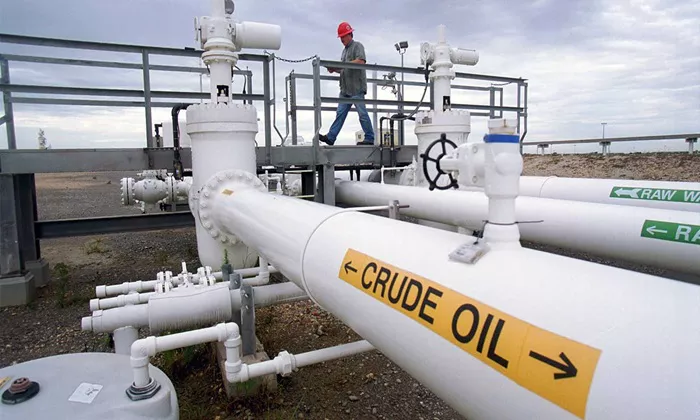Crude oil is a natural resource found deep underground. It is a thick, dark liquid made from ancient plants and animals that lived millions of years ago. This raw material is used to create many products, but one of the most important is gasoline. Gasoline is the fuel that powers cars, trucks, and many other vehicles. However, crude oil cannot be used as gasoline right away. It must go through a refining process to become the fuel we use daily.
Many people wonder how long it takes for crude oil to turn into gasoline. The answer is not simple because the process has several steps. It involves extraction, transportation, refining, and distribution. In this article, we will explain each step in detail and provide an estimated time frame for the entire process.
The Journey of Crude Oil
Extraction of Crude Oil
The first step in the process is extracting crude oil from the ground. Oil companies drill wells to reach underground reservoirs of crude oil. There are two main methods used for extraction:
- Onshore drilling – This method is used when oil is located beneath land. It can take weeks or even months to drill a well, depending on the depth and location.
- Offshore drilling – This is done in the ocean using oil rigs. Offshore drilling is more complex and can take months or even years to complete.
Once a well is drilled and oil is found, it is pumped to the surface. This step alone can take several months, depending on the location and size of the oil field.
Transportation to Refineries
After crude oil is extracted, it must be transported to refineries. This can be done in several ways:
- Pipelines – These are the most common and efficient way to transport crude oil over long distances. Pipelines move oil at a slow but steady pace, often taking days to weeks.
- Tanker ships – When oil is extracted from offshore locations or foreign countries, it is transported by large ships. A tanker journey can take weeks, depending on the distance.
- Trucks and trains – These are used for shorter distances. Transporting oil by truck or train may take a few days.
Refining Crude Oil into Gasoline
Once the crude oil arrives at a refinery, it goes through a complex refining process to become gasoline. This process involves several key steps:
1. Distillation
The first step in refining is distillation. Crude oil is heated in a large tower called a distillation column. This separates the oil into different parts based on boiling points. The lighter parts, like gasoline, rise to the top, while heavier parts, like diesel and asphalt, stay at the bottom.
This process can take a few hours to complete.
2. Cracking
Not all crude oil contains enough gasoline naturally. To create more gasoline, refineries use a process called cracking. This breaks down larger, heavier molecules into smaller ones, including gasoline molecules. Cracking can be done using heat or chemicals and usually takes a few hours.
3. Blending and Additives
After cracking, the gasoline is blended with other chemicals to improve its quality. Additives help clean engines, prevent corrosion, and improve fuel efficiency. This step takes a few hours to complete.
Quality Control and Storage
Once gasoline is ready, it goes through quality control testing to ensure it meets government and industry standards. If the fuel passes the tests, it is stored in large tanks at the refinery until it is ready for distribution.
This stage usually takes a few days to a week.
Distribution to Gas Stations
The final step is transporting gasoline from the refinery to gas stations. This is done using pipelines, trucks, or trains. The time required for this step depends on the distance, but it usually takes a few days.
Total Time Required
Now that we have discussed each step, we can estimate the total time it takes for crude oil to become gasoline:
- Extraction – Several months (can vary based on location)
- Transportation to refinery – Days to weeks
- Refining process – Hours to a few days
- Quality control and storage – A few days to a week
- Distribution to gas stations – A few days
In the best-case scenario, crude oil can be turned into gasoline in as little as one to two weeks after reaching the refinery. However, when including extraction and transportation, the entire process can take several months.
Conclusion
The process of turning crude oil into gasoline is complex and time-consuming. From extraction to refining and distribution, each step takes time and effort. While refining itself is quick, the overall journey from underground to a gas station can take months. Understanding this process helps us appreciate the effort required to produce the fuel that powers our daily lives.
FAQs
1. How much crude oil does it take to make gasoline?
On average, a 42-gallon barrel of crude oil produces about 19 to 20 gallons of gasoline. The rest of the barrel is used to make diesel, jet fuel, asphalt, lubricants, and petrochemicals. The exact amount varies depending on the type of crude oil and the refining process.
2. How long does crude oil last in a barrel?
Crude oil itself does not “expire” in the traditional sense, but its composition can change over time due to oxidation, evaporation of lighter components, or contamination. If stored properly in a sealed container and stable environment, crude oil can last for many years or even decades without significant degradation.
3. Are we running out of gasoline?
While gasoline supplies fluctuate due to geopolitical events, refining capacity, and market demand, we are not currently “running out” of gasoline. However, crude oil is a finite resource, and long-term concerns about supply and sustainability have led to the development of alternative fuels and energy sources. The global shift toward electric vehicles and renewable energy is gradually reducing dependence on gasoline.

